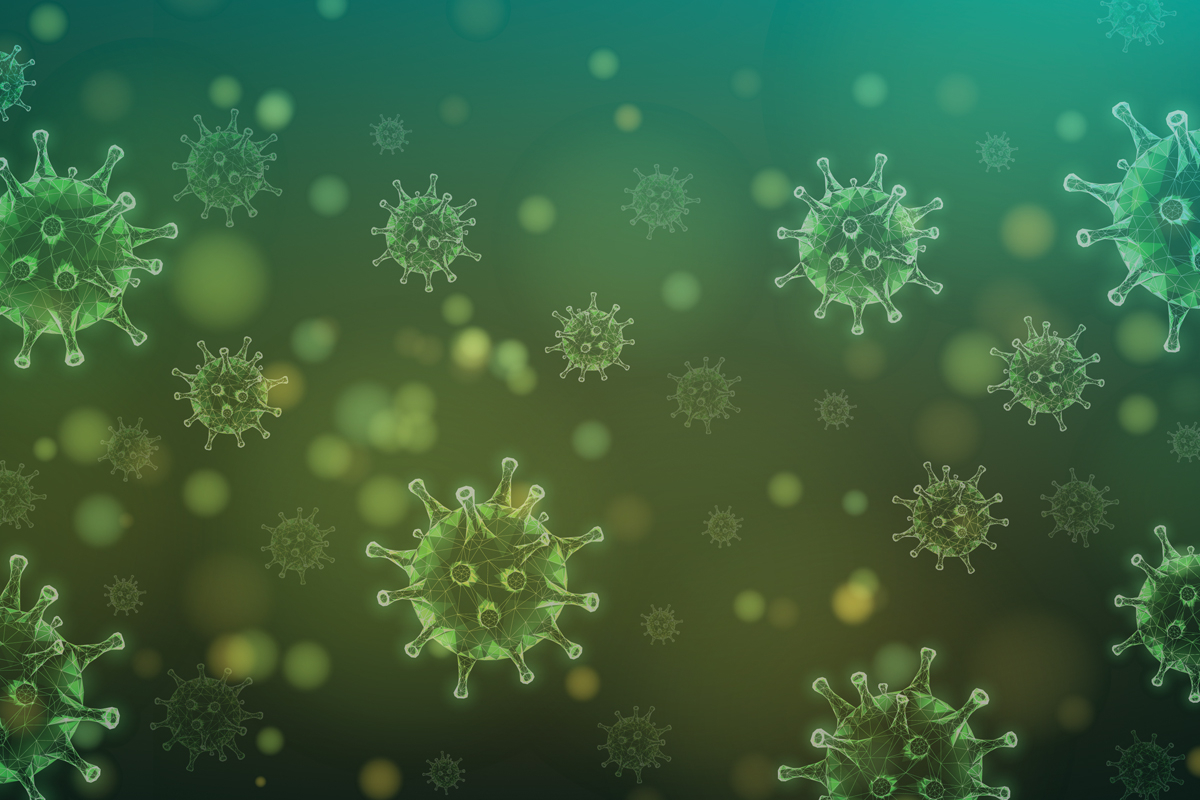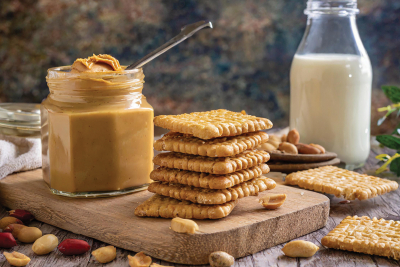New covid variant, flu spike in December

Haywood County hadn’t logged a coronavirus-related death in the better part of a year. But since Dec. 19, 2023, it has seen five.
This comes amid a national and statewide surge fueled by the new JN-1 variant, which now comprises about 80% of cases. According to reporting from Stateline, the virus is continuing to take thousands of lives a month as wastewater samples indicate a recent spike in cases that peaked in mid-December with about 1.9 million daily infections nationwide. Surging alongside coronavirus infections have been flu cases, which have also led to hospitalizations around the state, and even some deaths.
Haywood County Medical Director Dr. Mark Jaben has been one of the most consistent voices in the region when it comes to informing the public of viral spikes and how to mitigate them. He said that this year, COVID and the flu were both steady all summer, which is unusual in the case of the flu due to the virus’ sensitivity to heat and humidity.
In September, there was a smaller COVID spike that lasted a few months and led to multiple hospitalizations. Next, there was a respiratory syncytial virus (RSV) spike. That illness typically affects infants and elderly people but can still be dangerous for the greater community.
“There were some hospitalizations here, but not as much as nationwide,” Jaben said. “That spike peaked around late November.”
Officials began to see another increase in COVID and flu cases, and Jaben said that by mid-December, the region was in the middle of a full-on surge, just in time for the holiday season and all the gatherings that come with it. At that time, the county notched up from the low-risk category to medium risk. In a span of just a few weeks, there were five COVID-related deaths.
Related Items
“I had not seen a COVID death in a while, and then we got several all at one time right around Christmas,” said Dr. Sarah Banks, the Haywood County’s health director.
“The flu is causing more respiratory illness, but COVID has been causing more serious illness, including deaths,” Jaben said. “COVID deaths have still been about three times the flu.”
While deaths and hospitalizations are easy for officials to track, it’s nearly impossible to get an entirely accurate count of cases now that tools like contact tracing are no longer used. Articles about the recent nationwide spike cite wastewater analysis, a relatively unreliable method that isn’t even employed in most Western North Carolina communities since there aren’t enough people connected to public sewer systems. In this region, only the Eastern Band of Cherokee Indians, as well as Henderson, Jackson and Buncombe counties, do wastewater analysis to monitor viral activity.
However, Jaben said they still do what surveillance they can, and Banks said they get a good idea of trends by maintaining frequent communication with doctors, healthcare providers and even patients.
Solutions and mitigation techniques are similar to what they’ve always been, especially when it comes to keeping vaccination numbers as high as possible. Jaben said that while this season’s flu vaccine has had a “pretty good uptake,” especially among older populations, people have been less likely to receive the COVID vaccine. However, the COVID vaccine is still integral in preventing serious illness, especially in older and immune-compromised people.
Jaben and Banks both think the lingering effects of disinformation campaigns have left some people reticent when it comes to the vaccine — which has also bared out recently in the reduction of parents who are inoculating their children against measles. There have been myriad conspiracy theories regarding everything from the COVID vaccine’s efficacy to side effects even to its intended purpose — some still believe the vaccine is a form of population control. Jaben said only one thing he’s heard from these groups has proven true — the vaccine can cause myocarditis in young males; however, he added that people with COVID are still five times more likely to get myocarditis than those who receive the vaccine.
Myocarditis is an inflammation of the heart muscle usually associated with a viral infection.
When it comes to the continued hold disinformation maintains over some people, Banks said the specific thing that irks her has been the continued belief that the vaccine is intended to prevent any illness, so any time someone who’s been vaccinated becomes infected, people can point to those cases and say the vaccine doesn’t work at all.
“The vaccine has never been about preventing any illness; it’s about preventing serious illness,” she said. “No vaccine has ever been designed to guarantee you won’t get an illness. That’s why we are seeing a resurgence of vaccine-preventable illness, because the lack of vaccine uptake.”
But Banks said the biggest factor may simply be “COVID fatigue.”
“If they got COVID after they were vaccinated and they did well, some people felt like they had enough coverage at that point, but the people who had the same outcome without the vaccine feel the same way, as though the vaccine wasn’t necessary,” Banks said.
Jaben said that while the new JN-1 strain may necessitate a new COVID booster, he noted that it isn’t causing serious illness as frequently in people who have the latest booster onboard. However, it is still highly transmissible, so even if someone feels confident in their ability to stave off serious infection, they can still pass it on to someone who is at higher risk.
The consensus is that, like other years, 2024 will bring waves of COVID, and considering vaccines wane over time, Jaben said it’s best for people to ensure they are up on the latest booster. The FDA committee that handles those vaccines is supposed to meet in February, Jaben said, and if a new booster that’s tailored to prevent serious illness from JN-1 is approved, he recommends getting it as soon as possible.
“This most recent vaccine will add to the effectiveness of that ‘covid wall,’” Jaben said.
Another treatment that has proven successful for some who are at risk of serious illness has been Paxlovid, but Jaben said that works best if taken as soon as infection is suspected. Because the antigen tests aren’t always able to pick up illness until days after symptoms start, that can be difficult. In addition, Jaben said the medication can interact with many others, making it tough to prescribe for everyone. He said the key is to focus on prevention and mitigation in ways people can control.
Banks and Jaben both said that whenever symptoms begin, even if a person thinks it’s just a cold or allergies or some other “garden-variety illness,” as Jaben called it, they should take precautions as though it may be COVID or the flu, because by the time symptoms become more severe, infection may have already spread to others.
“There’s no way to really tell if you’re sick with COVID or the flu,” Jaben said. “Don’t write it off as allergies or a cold and then pass it on to someone who’s sensitive, because we are having people dying in our community.”
Even if people are healthy and have fared well with the virus before, Banks recommends taking whatever precautions they can, because serious illness or long COVID are still occurring from time to time even in younger, less vulnerable populations.
“What I tell my staff and my family is wash your hands first and foremost,” she said. “We know that washing your hands the single best way to stop the spread of germs.”
Although the latest surge has waned, Banks and Jaben warn that the same guidance will continue to apply, especially since the one guarantee is that there will be more surges.
“COVID hasn’t gone away,” Banks said. “It is still here, and respiratory illness is very, very high in our community right now, and people are getting severely ill.”













